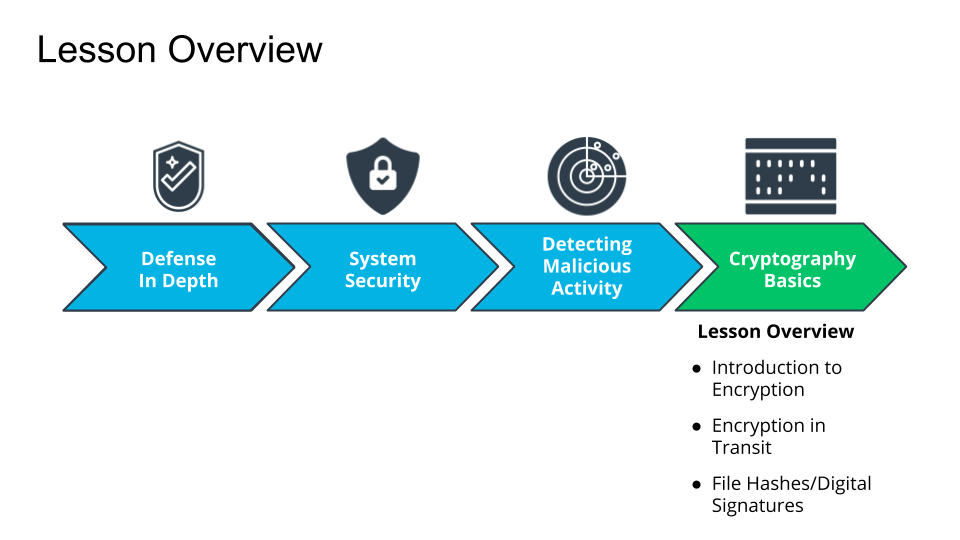18. Cryptography Basics (Applied Cryptography) Lesson Conclusion
Cryptography Basics (Applied Cryptography) Lesson Conclusion Heading
Cryptography Basics (Applied Cryptography) Lesson Conclusion
ND545 C02 L04 A14 Lesson Conclusion V2
Cryptography Basics (Applied Cryptography) Lesson Conclusion Text
I know this was a challenging lesson. But you hung in there and did a great job.
Luckily a deep understanding of what's under the hood of encryption algorithms isn't part of a junior analyst's job.
It does help to understand, if even at a high-level, how encryption works and what encryption you should use given a scenario.
You're well on your way there!

Lesson Overview
Glossary and Resources
Glossary
Here are all the terms for this lesson.
| KeyTerm | Definition |
|---|---|
| 7-zip | is a free and open-source file archiver, a utility used to place groups of files within compressed, encrypted containers known as "archives". |
| Algorithm | a process or set of rules to be followed in calculations or other problem-solving operations, especially by a computer. |
| Asymmetric Encryption | is a cryptographic system that uses pairs of keys. Public keys, which may be disseminated widely, and private keys, which are known only to the owner. |
| Authentication | the process or action of verifying the identity of a user or process. |
| Bitlocker | is a full volume encryption feature included with Microsoft Windows. |
| Certificate Authority | is a an organization that acts to validate identities and bind them to cryptographic key pairs with digital certificates. |
| Ciphertext | is encrypted text modified from plaintext using an encryption algorithm. |
| Collision | is a situation that occurs when two distinct pieces of data have the same hash value. |
| Data at rest | means inactive data that is stored physically in any digital form. |
| Data in transit | also referred to as data in motion, is defined into two categories, information that flows over the Internet and data that flows in the confines of a private network. |
| Encryption | is the process that converts plaintext, or text that can be read by anyone, into ciphertext and it can only be read by the person who has the secret code, or decryption key. |
| File Hash | is the process of using an algorithm for verifying the integrity of a computer file. |
| Plaintext | data that represent only characters of readable material. |
| Public Key Infrastructure | is a technology for authenticating users and devices. The basic idea is to have one or more trusted parties digitally sign documents certifying that a particular cryptographic key belongs to a particular user or device. |